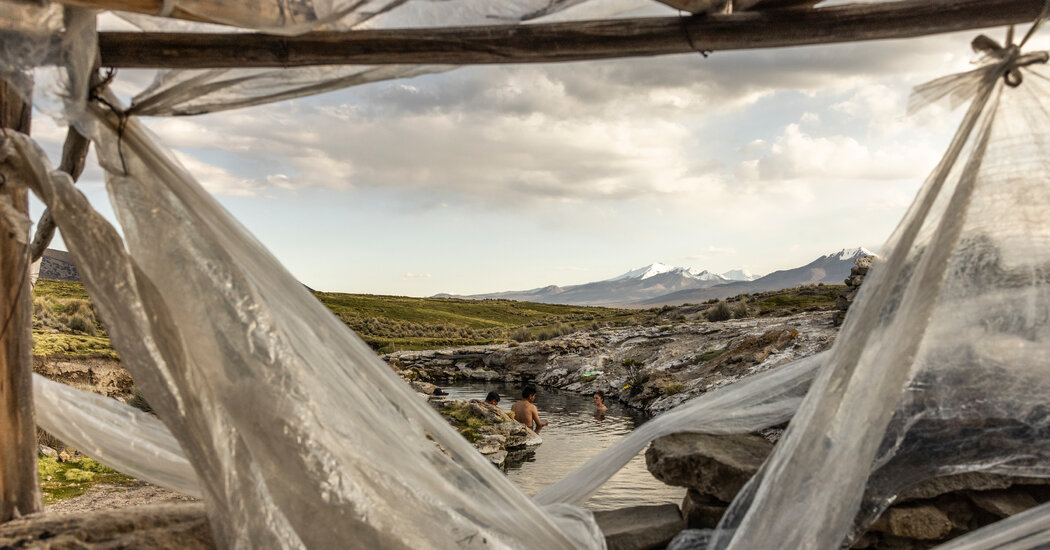Some hot springs look like palaces, others like holes in the ground. Some feel like parties, others like prayers. There are hot baths within cities, on remote islands, in the desert, inside thick forests. Thermal water can be green, orange, blue, yellow or turquoise. It can be milky and opaque, silty with sediment or as clear as a municipal pool. Sometimes it’s barely lukewarm; other times it’s so hot it hurts.
Several years ago, with the dream of making a book, I set out to learn and document how people around the world make use of thermal waters. At 23 locations across 12 countries, I talked with workers, stewards and experts, who taught me about the local history and personality of each place. Many told me about the ways they manage land and water as a collective. They explained how the presence of bathing places can affect the bodies, communities and cultures.
I met visitors who reveled in the ways that hot water softens their minds and muscles. Some, like me (and perhaps like you), were enthusiasts with a certain devotion to hot water, enthralled with the way it reminded them to be citizens of nature.
Below are eight highlights adapted from my book “Hot Springs” — from an onsen in Aomori Prefecture, Japan, to a set of high-altitude pools near Mount Sajama, in Bolivia.
Aomori, Japan
When I was 14, my parents, both schoolteachers, took jobs teaching on a United States Air Force base in Misawa, Japan. I went to the on-base high school, and we lived in a small house between a potato field and a rice paddy. The few local onsen, or public hot baths, were so different from the hot springs I’d been to back home in Idaho, places that were outdoorsy and sometimes a little rowdy.
In Japan, the hot springs are ritualized and structured. In an onsen, there is a palpable sense of reverence for your own body, for others and for the water.
I learned to use the onsen properly: to pull up a small stool and a bowl to the shared shower area, to scrub every inch of the body, to shampoo and condition my hair, to clean between my toes and under my fingernails, to rinse my body and the area I occupied.
Once clean, you soak. You soak until your body is red with warmth. And inside you feel purified, too.
Ponta da Ferraria, the Azores
Ponta da Ferraria is set on the westernmost point of São Miguel Island, in the Azores, where volcanic hills slope sharply toward the ocean. A thermal cove, it can be reached only at low tide, when the waves aren’t too wild and the hot…
Click Here to Read the Full Original Article at NYT > Travel…
